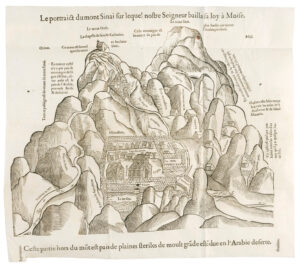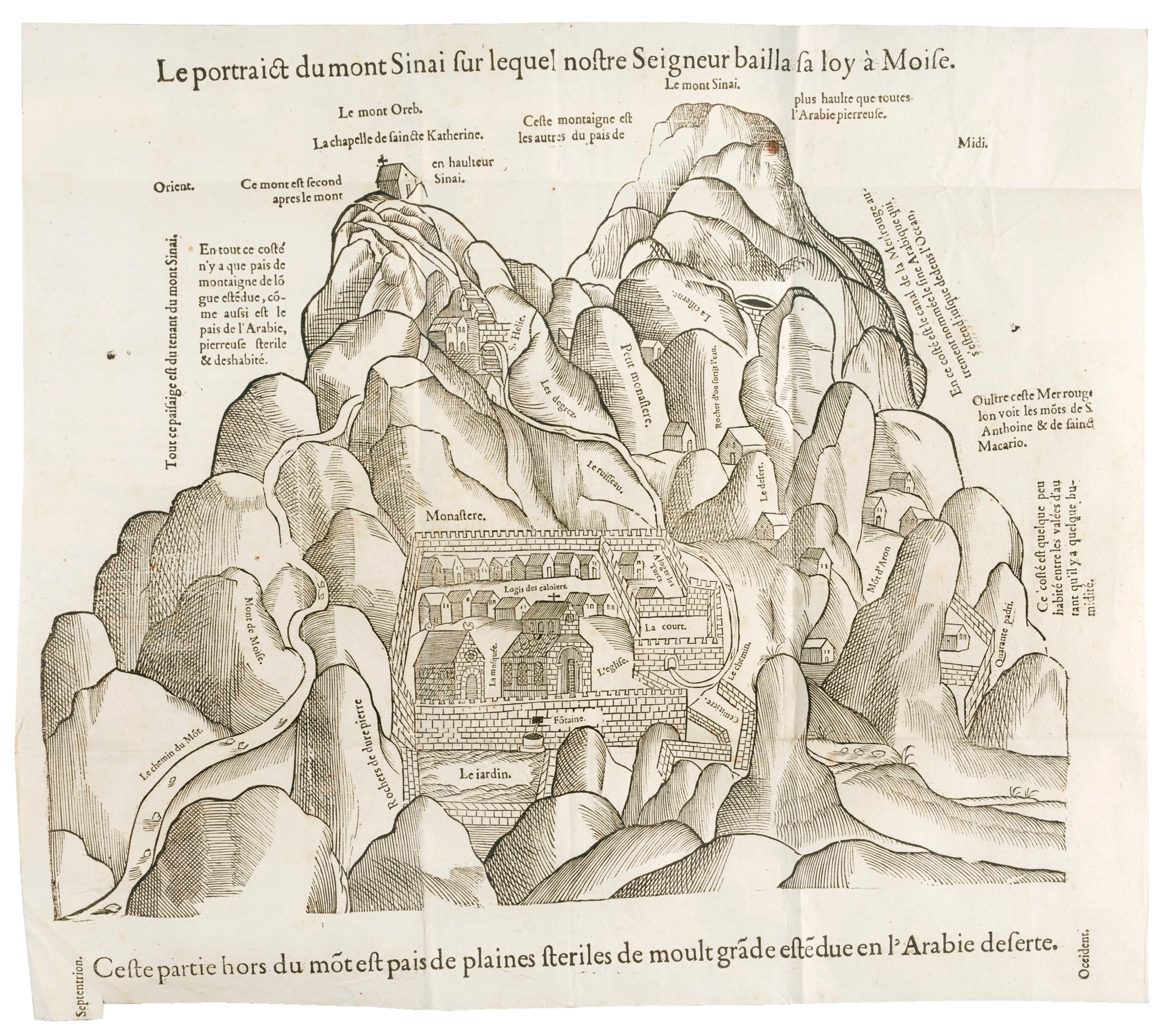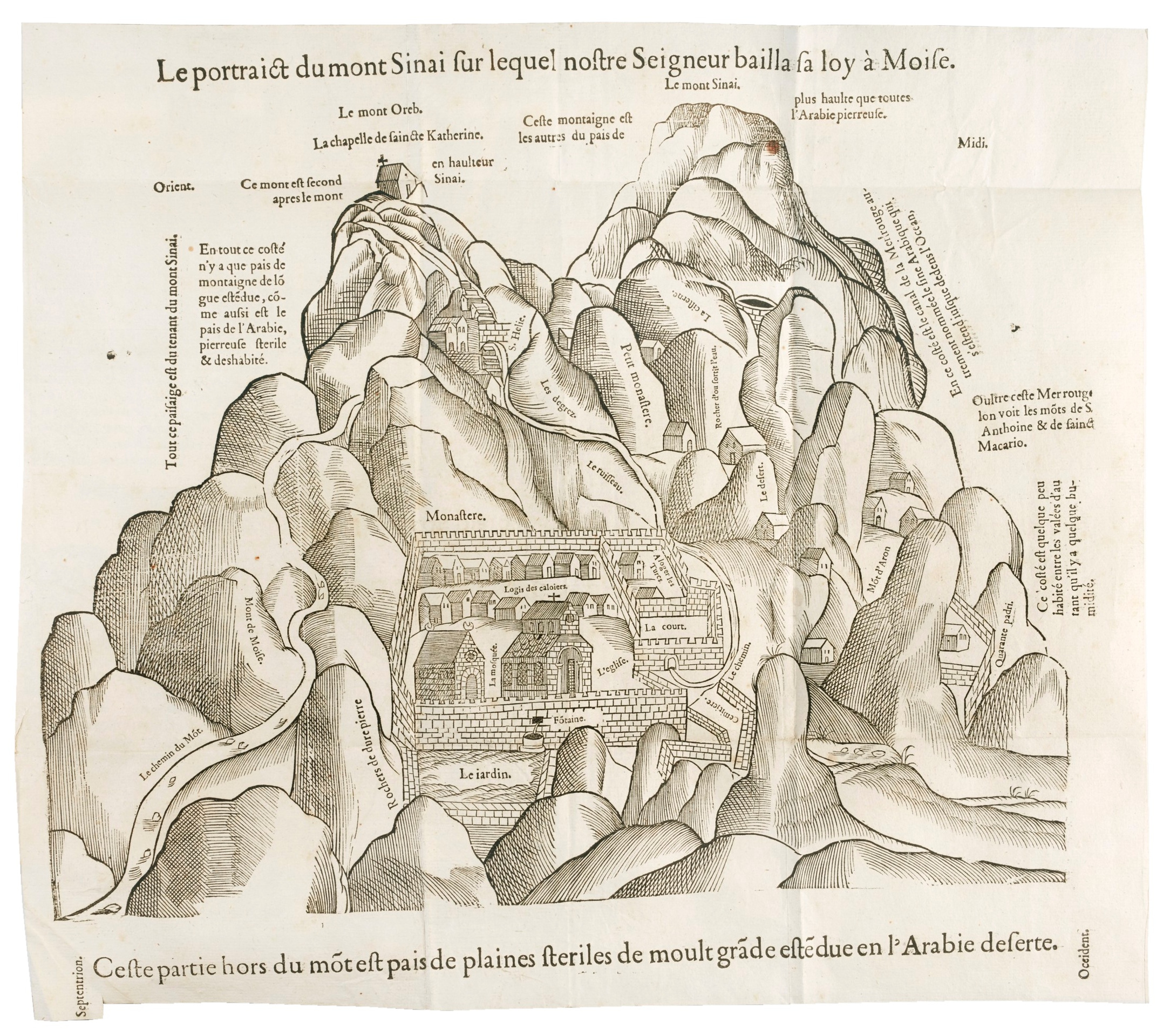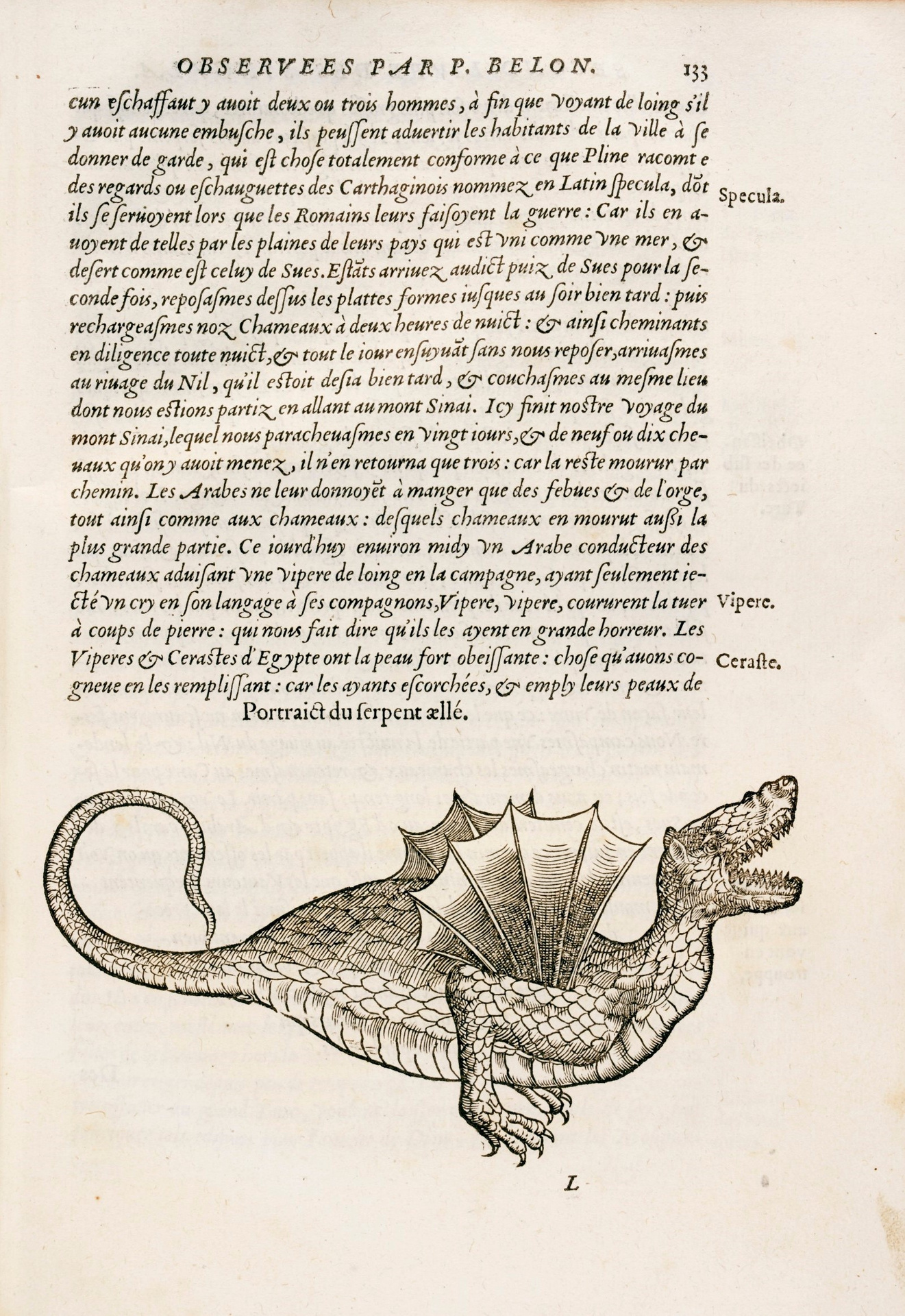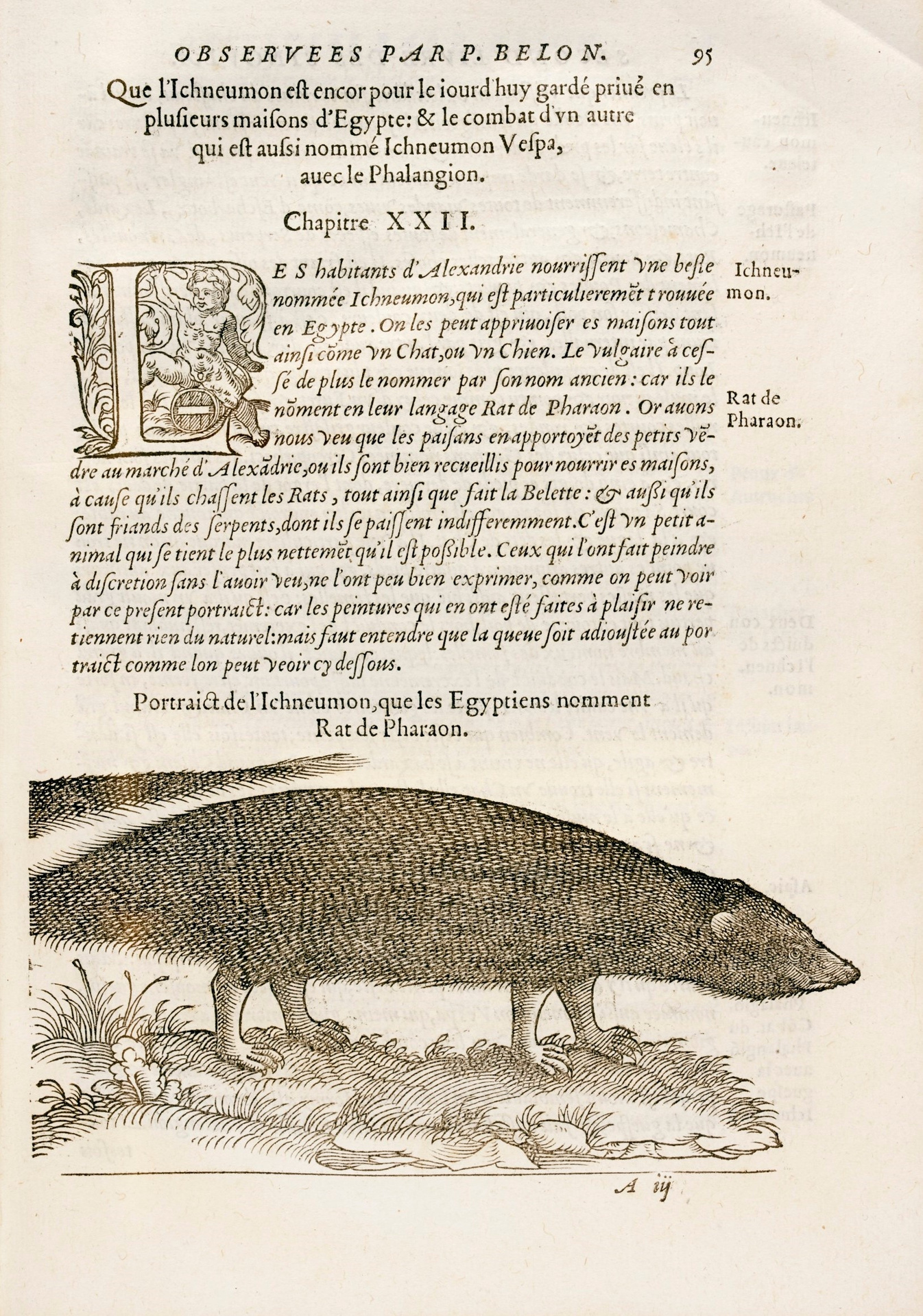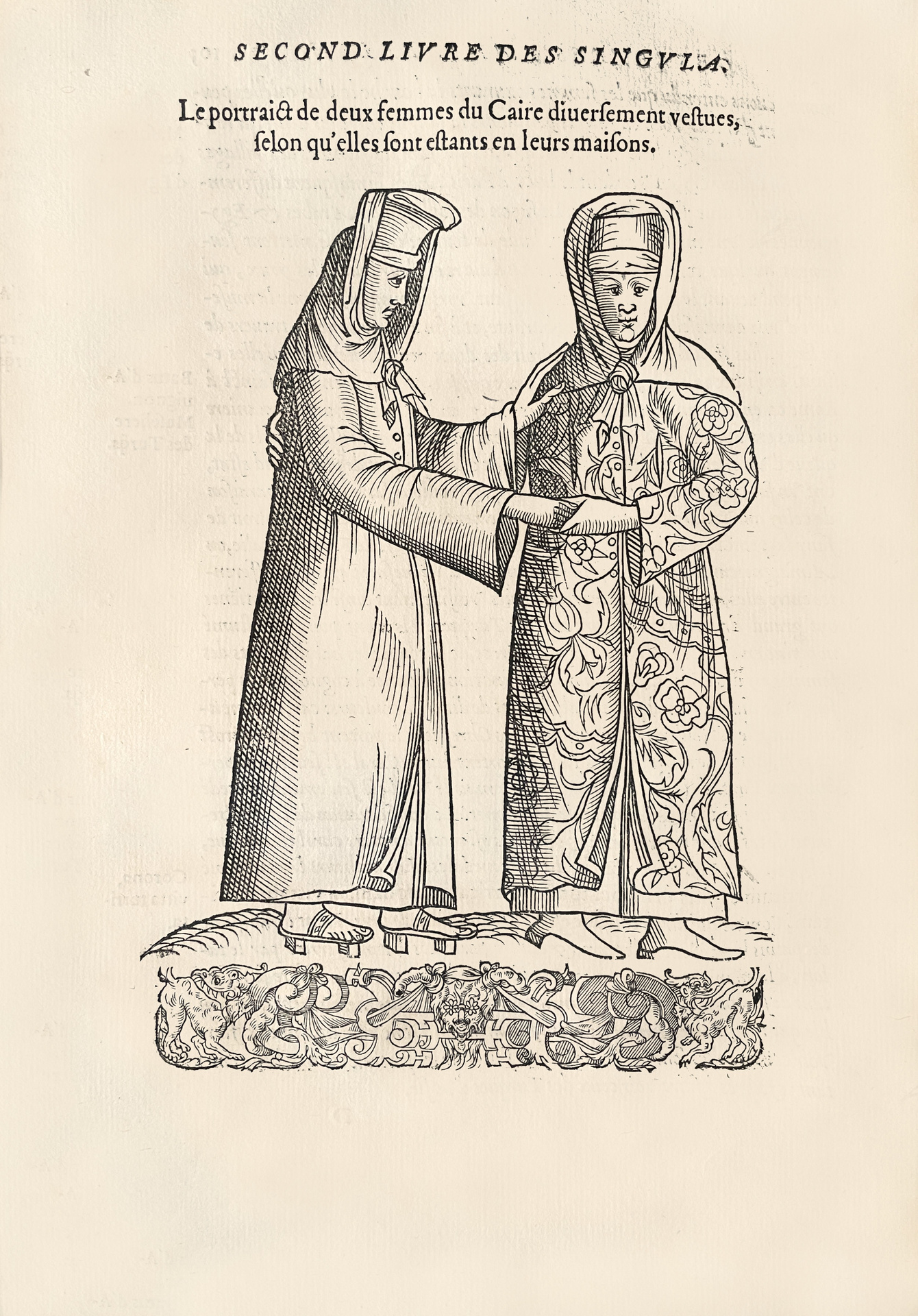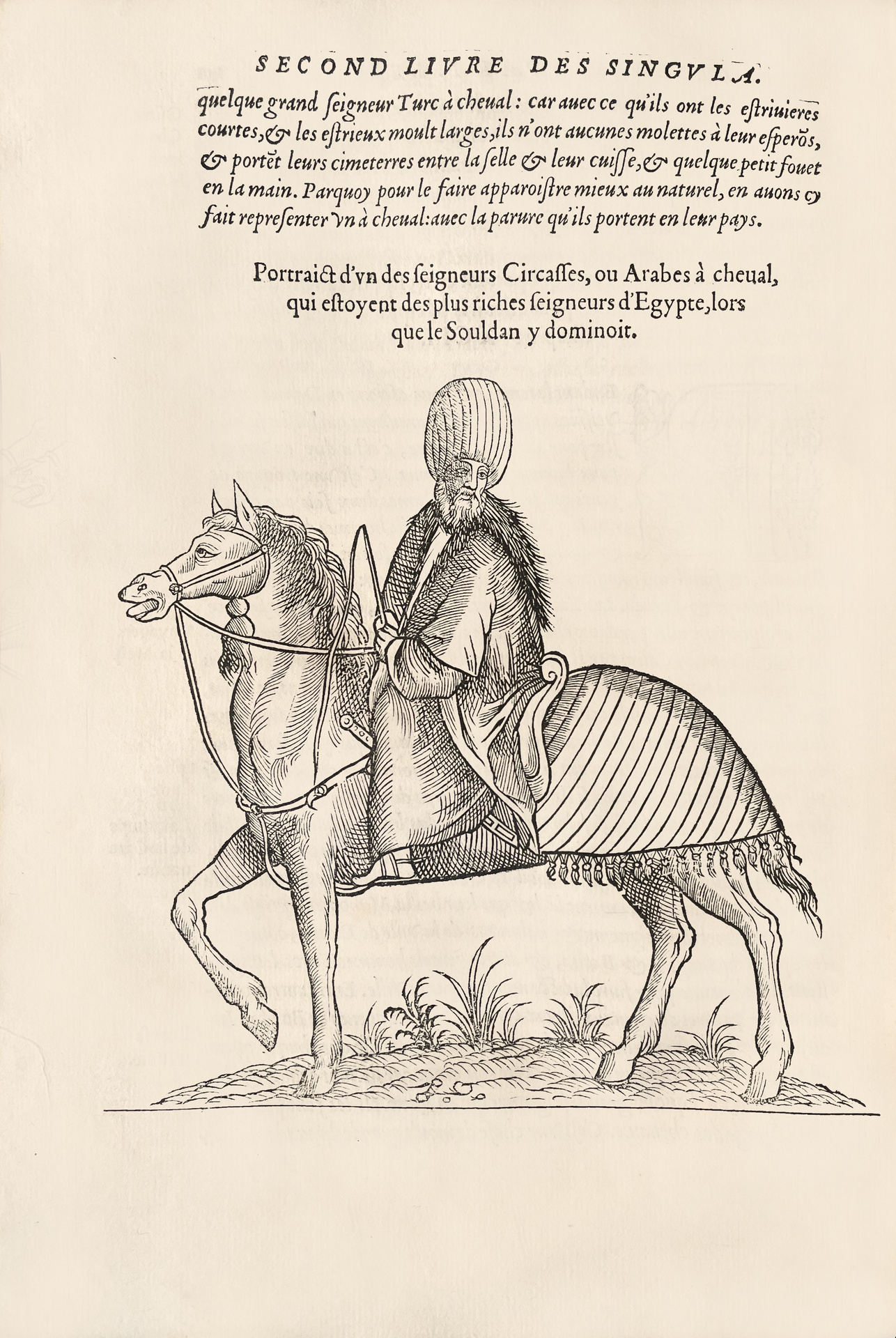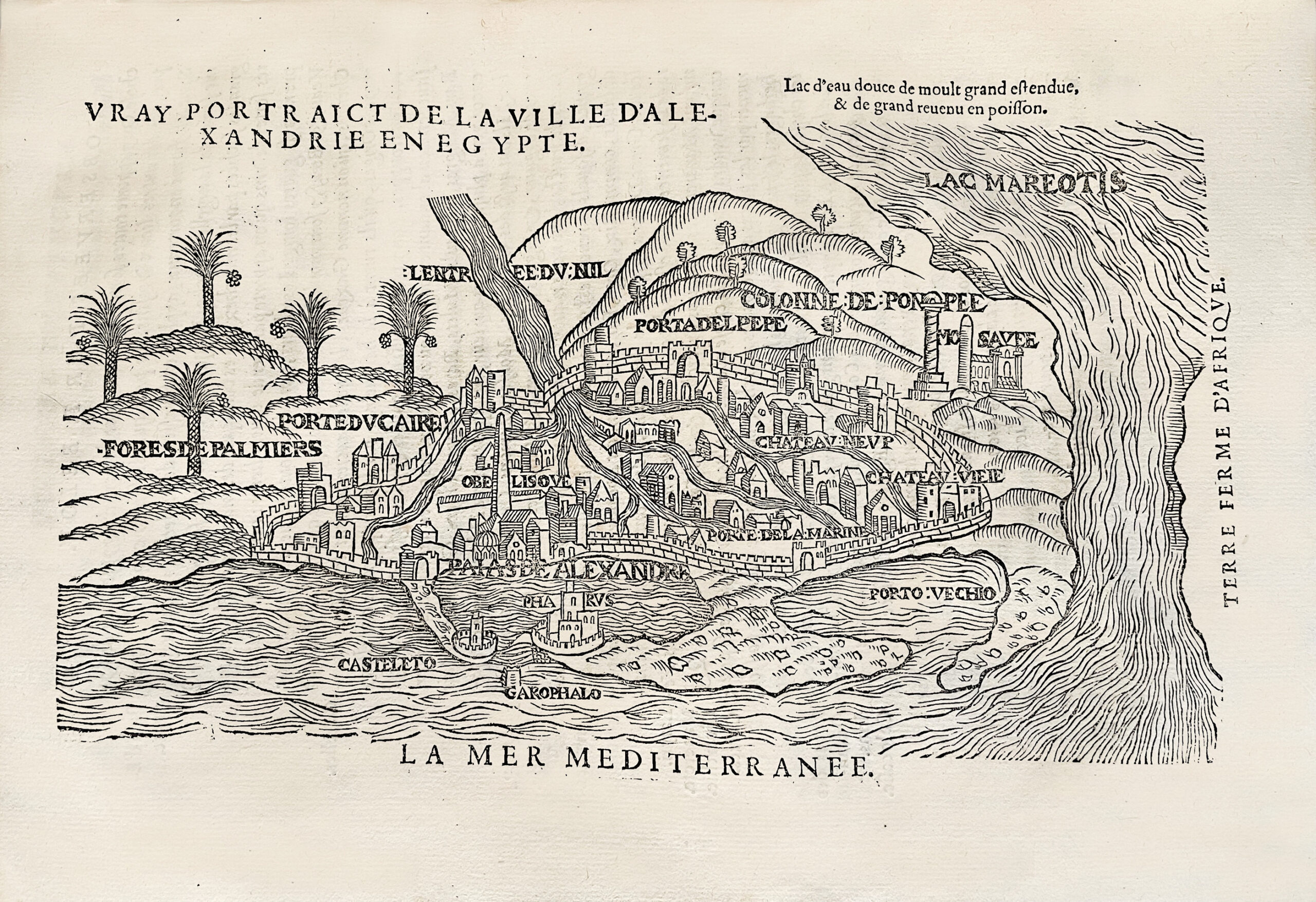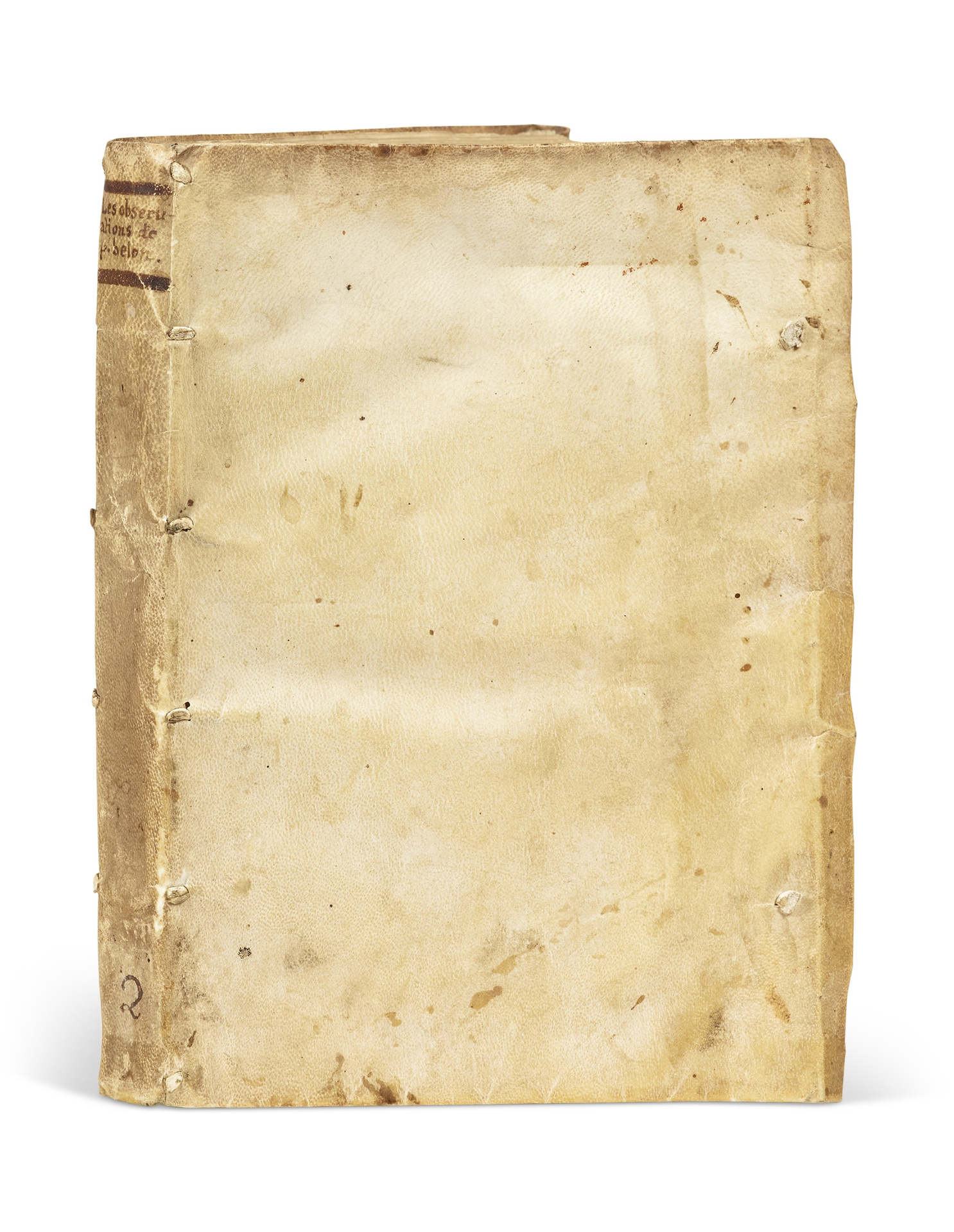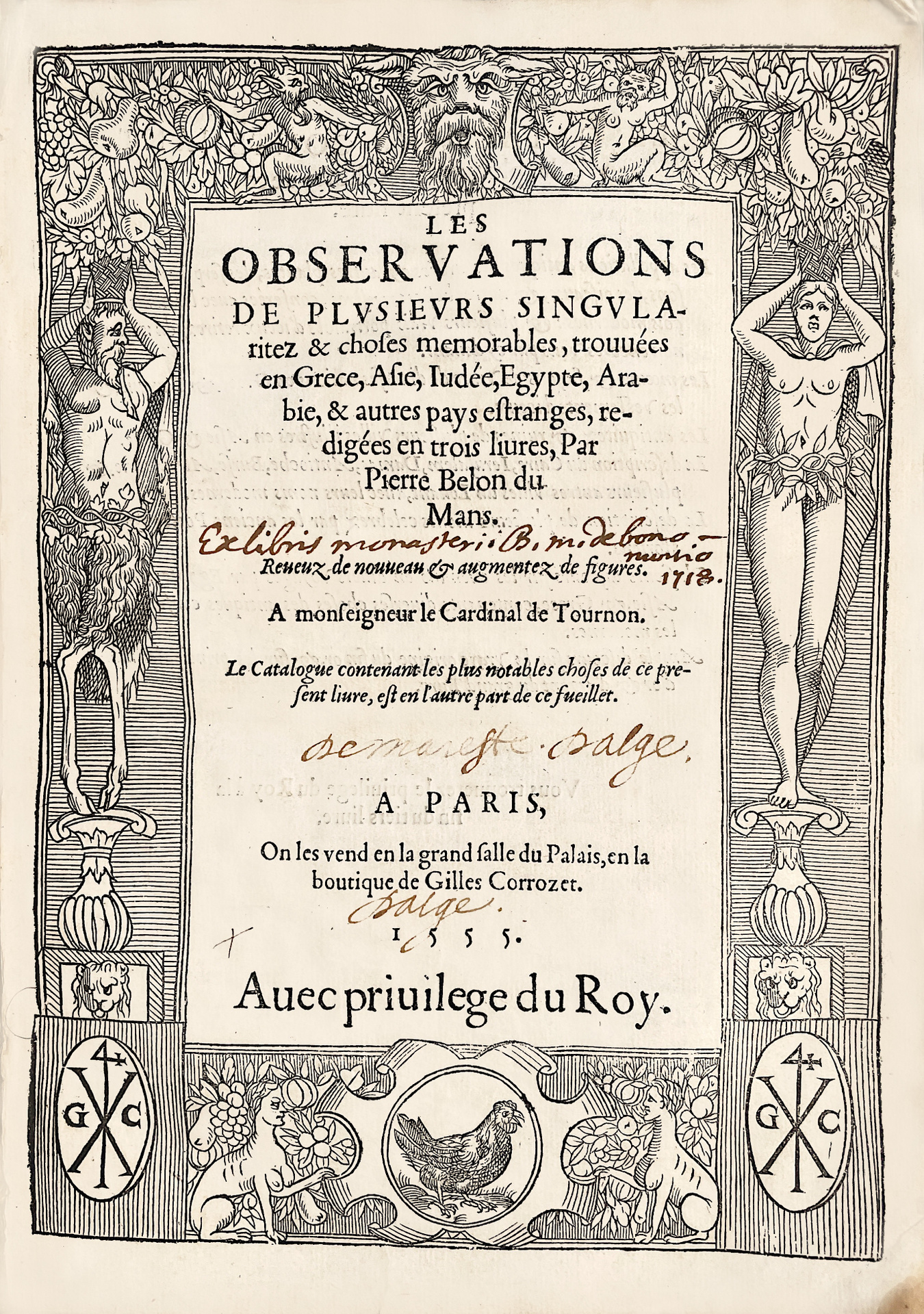Paris, Gilles Corrozet, 1555.
3 parts in 1 volume 4to [227 x 158 mm] of (12) ll., 211 ll., (1) l. of privilege, 1 folding map, 45 woodcuts in the text. Limp overlapping vellum, flat spine with the title in ink, handwritten title on the lower edge, remains of ties. Contemporary binding.
Third enlarged edition of this sought-after work, fruit of the journeys in the East of the naturalist Pierre Belon (1517-1564).
Brunet, I, 762 ; Nissen ZBI 304 ; Nissen, Botanische, 132.
“Sought-after book” (Graesse, Trésor de livres rares, I, 331).
“Book illustrated with numerous woodcuts in the text, mostly relating to natural history; some depict oriental costumes. All editions of this work are highly sought-after.” (Backer Library, no. 2782).
He had a grêt influence on the history, geography and natural history of the Nêr and Middle East.
Belon travelled through the Levant from 1546 to 1549, and brought back a large number of new observations on the natural history and on the habits and customs of the populations of the regions he visited (with their costumes).
This journey enabled him to visit Greece, where he discovered Mount Athos, Turkey, Egypt, where he explored Alexandria and Cairo, Judê, Arabia and Palestine. His account thus includes unpublished descriptions of ancient monuments or of the cities where he stayed.
It is one of the first naturalist journeys in history.
Curious about everything, Belon collected numerous observations in natural history but also in archaeology and on the life of the peoples he visited. He returned to France in 1549 and obtained a pension of 200 ecus from King Henry II, which enabled him to continue his resêrch.
This is the most documented and detailed work in French on these regions to that date.
The Cardinal of Tournon, an enlightened protector of science and literature, was keen to be Pierre Belon’s patron and if he did not inspire the idê of his grêt journey to the East, he at lêst generously provided the expenses.
What prompted Belon to undertake his peregrination was the desire to see up close the plants and medicinal substances he had rêd about in books.
This journey to the East, which at first was intended only for the study of drugs, became, through its results, a true scientific expedition.
“Belon successively visited Greece, Crete, Constantinople, the island of Lemnos, the island of Thasos, Mount Athos, Thrace, Macedonia, Anatolia, the islands of Chio, Metelin, Samos and Rhodes. There he embarked for Alexandria, saw Cairo, travelled through lower Egypt; from there he entered Palestine, passing through the Isthmus of Suez and Mount Sinai. He visited Jerusalem, Mount Lebanon, Aleppo, Damascus, Antioch, Tarsus, and returned to Constantinople via Anatolia. In Rome he met his generous patron Cardinal de Tournon.
The intrepid traveler did more than he had promised: not only did he enrich natural history with a large number of entirely new observations, but he also made the ruins, the antiquities and the religious and moral state of the regions he had visited known. Belon recorded the results of his journey in a very remarkable work.” Michaud.
“His [Observations] was the most documented account of the Levant which had appêred up to that time. Of importance is his description of Cairo after 30 yêrs of Turkish occupation” (Blackmer 115).
The illustration contains an engraved title, numerous decorated letters, hêd and tail-pieces and 45 woodcuts in the text representing trees, various animals (including a giraffe…), a view of the surroundings of the castle of Abydus in Turkey and a large view of the city of Alexandria, plants, costumes…
This edition also contains a portrait of Belon at the age of 36 and a large folding map of Mount Sinai, which are not in the 1553 edition. This map is missing in most copies.
A precious copy preserved in its authentic contemporary limp vellum binding.
Provenance: on the title page, several handwritten ex libris “de Marest Dalge”, probably Antoine de Marest (died 1672), lord of Alge and advocate general of the Court of Aides of Normandy. The copy also includes the engraved ex libris of two members of the de Mareste family, with the family arms and their motto “A Dieu seul je Mareste” – handwritten ex libris “ex-libris monasterii B.M. de bono nuntio 1718”.
